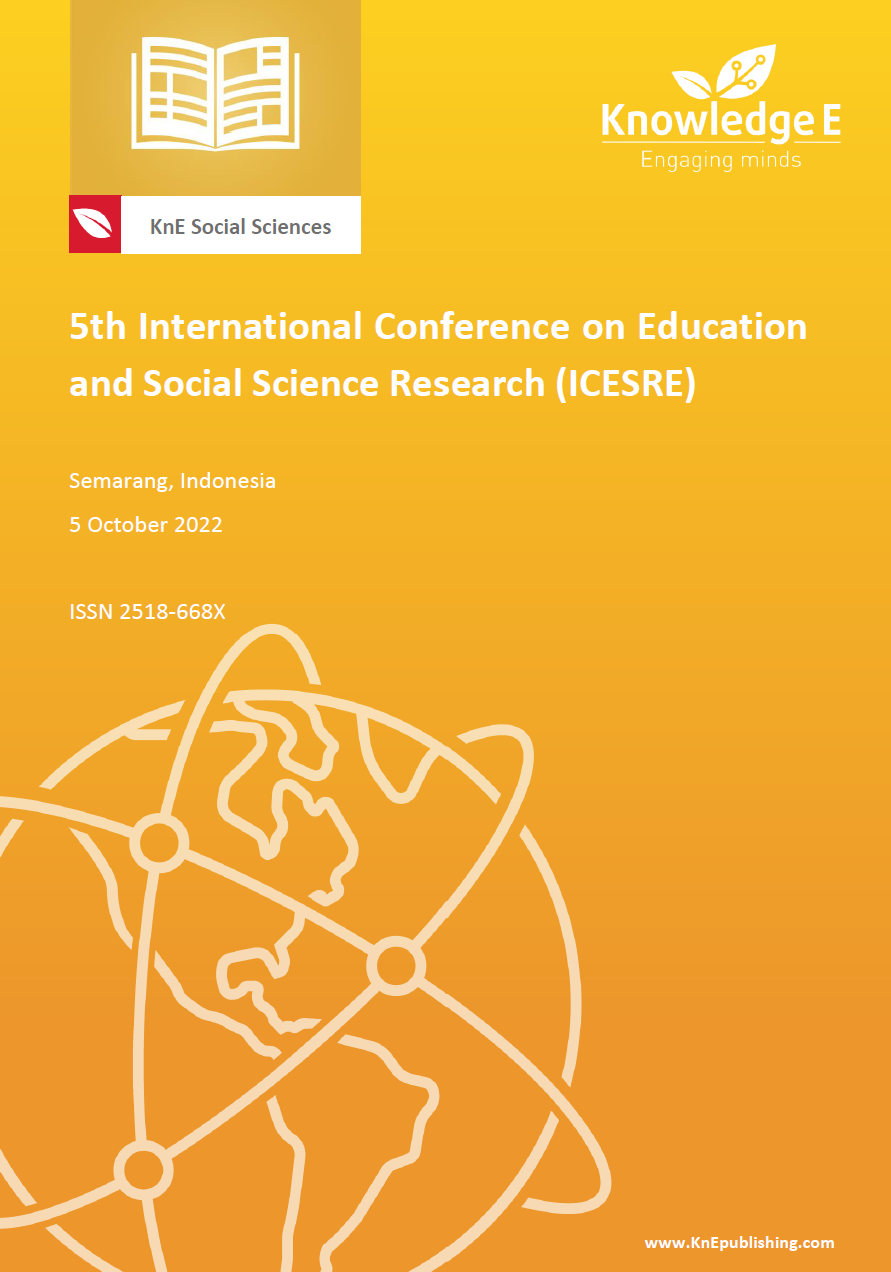Analysing the Benefits of the Team-of-Teams Model in the Changing Work Environment at the Centre for English Excellence
DOI:
https://doi.org/10.18502/kss.v7i19.12435Abstract
In the current era, volatility, uncertainty, complexity, and ambiguity (VUCA) are common challenges that organizations face. To overcome these challenges, organizations need to develop a flexible organizational structure, one that offers flexibility and adaptability. This research aims to understand how the International Centre for English Excellence (ICEE) practices the Team-of-Teams (ToT) model in the currently changing work environment. Data was gathered using in-depth interviews with eight participants of ICEE members. The result showed that ICEE practices ToT by assigning roles to each individual, and all these roles would be switched between members. The ToT model is used because it gives flexibility and help member to adapt to changes. The benefits of using the ToT model are role switching, which enables swift substitution between members, better preparation and adaptation to changes, and improvement of other skills and knowledge. The primary challenge they face is in preparing the members to take on new roles. ToT models offer flexibility and adaptability to face VUCA and are good to use, especially for a startup, small company, and organization that needs more flexibility but is not suitable for a large company that needs specialization in a certain division.
Keywords: Organizational structure; Team of teams; Organization model; Pandemic
References
Lunenburg FC. Organizational structure and design. Journal of Educational Leadership and Policy Studies. 2013;I:43.
Leonard K. What is an organizational model? Houston Chronicle [Internet]. 2018 Aug 29. Available from: https://smallbusiness.chron.com/organizational-model- 22014.html
Vecht B van der, Dignum F, Meyer J-JC. Autonomous agents adopting organizational rules. IGI Global. 2009. 20 p.
Eze SC, Bello AO, Adekola TA. The effects of organizational structure on the performance of organizations. European Journal of Business and Innovation Research. 2017;5:46–62.
Wang D, Yang S. Impact of organizational structure and HRM on organizational performance. IEEE International Engineering Management Conference. 2007:164– 169.
Gaspary E, de Moura GL, Wegner D. How does the organisational structure influence a work environment for innovation. International Journal of Entrepreneurship and Innovation Management. 2020;24:132.
Scott JT. Organizational structures and cultures. The Concise Handbook of Management. 2020;November:66–75.
Latifi M, Shooshtarian Z. The effects of organizational structure on organizational trust and effectiveness. Polish Journal of Management Studies. 2014;10:2–73.
Meehan WF, Jonker KS. Team of Teams: An emerging organizational model [Internet]. Forbes [Internet]. 2018 May 30. Available from: https://www.forbes.com/sites/meehanjonker/2018/05/30/team-of-teams-anemerging- organizational-model/?sh=662160c26e79
McChrystal S, Collins T, Silvermand D, Fussell C. Team of teams: New rules of engagement for a complex world. 2015.
Lewis D. International Encyclopedia of civil society. International Encyclopedia of Civil Society. 2010;19:0–7.
Abiddin NZ, Ibrahim I, Aziz SAA. Non-governmental organisations (NGOs) and their part towards sustainable community development. Sustainability. 2022;14(8).
Carter E. Party organization and leadership. The Extreme Right in Western Europe. 2012;230:64–100.
Clawson JG. Organizational structure. 2008.
Poli S. Organizational structures. Research Management - Europe and Beyond. 2018;89–107.
Renani GA, Ghaderi B, Mahmoudi O. The impact of organizational structure on the effectiveness of communication from the perspective of employees in the department of education. International Journal of Management, Accounting and Economics. 2017;4:989–1001.
Group A contributor. Your team never mattered so much. Forbes [Internet]. 2015 May 12. Available from: https://www.forbes.com/sites/ashoka/2015/05/12/your-teamnever- mattered-so-much/?sh=4a58efc253ea
Meehan WF, Jonker KS. Learning to live in a team-of-teams world. Standford Social Innovation Review [Internet]. 2018 May 22. Available from: https://ssir.org/articles/entry/learning_to_live_in_a_team_of_teams_world#
Klooker M, Nicolai C, Matzdorf S, Trost A, von Schmieden K, Böttcher L, et al. On creating workspaces for a team of teams: Learnings from a case study. Design Thinking Research. 2016;67–84.
Reese S. Team of teams: New rules of engagement for a complex world. The Learning Organization. 2018;25:288–291.
Aspers P, Corte U. What is qualitative in research. Qualitative Sociology. 2019;44:599–608.
Shukla P. Essentials of marketing research. 2008;29–37.
Given L. Exploratory research. The Sage Encyclopedia of Qualitative Research Methods. 2008;1:328–330.
Heale R, Forbes D. Understanding triangulation in research. Evidence Based Nursing. 2013;16:98.
Daniels JD, Radebaugh LH, Sullivan DP. International business. 16th ed. Pearson; 2019.
Devaney E. Organizational structures – the illustrated guide. Hubspot [Internet]. 2022. Available from: https://offers.hubspot.com/hubfs/ HubSpot_Organizational_Structures.pdf?hubs_post-cta=anchor&hsCtaTracking= 7cbd0328-6c8c-40e0-98dd-c3b6e6be96f0{%}257Cea635cce-03b7-43b1-8407- d0252e698414&hubs_offer=offers.hubspot.com{%}252Forganizational-structureguide& hubs_p
Jamison E, Simpson J, Kumar P, Kemp A, Awate K, Manning K. Strategic management adapted by Reed Kennedy. 2020. 352 p. Available from: https://doi.org/10.21061/strategicmanagement
Johnson S. Factors to consider when designing an organization structure. AZ Central. 2018. Available from: https://yourbusiness.azcentral.com/factors-consider-designingorganization- structure-4826.html
Dean C, MacMillan J, Bennett W, Merket D, Salas E, Zaccaro SJ, et al. Challenges in team-of-teams training and assessment. Proceedings of the Human Factors and Ergonomics Society Annual Meeting. 2008;52:2037–2041.

